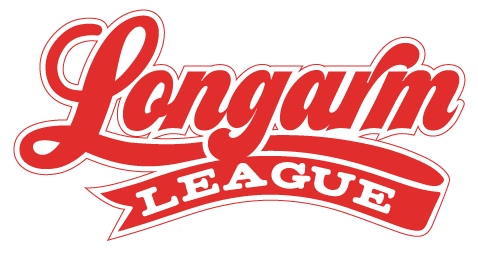Fossilized Edge-to-Edge Digital Quilting Design
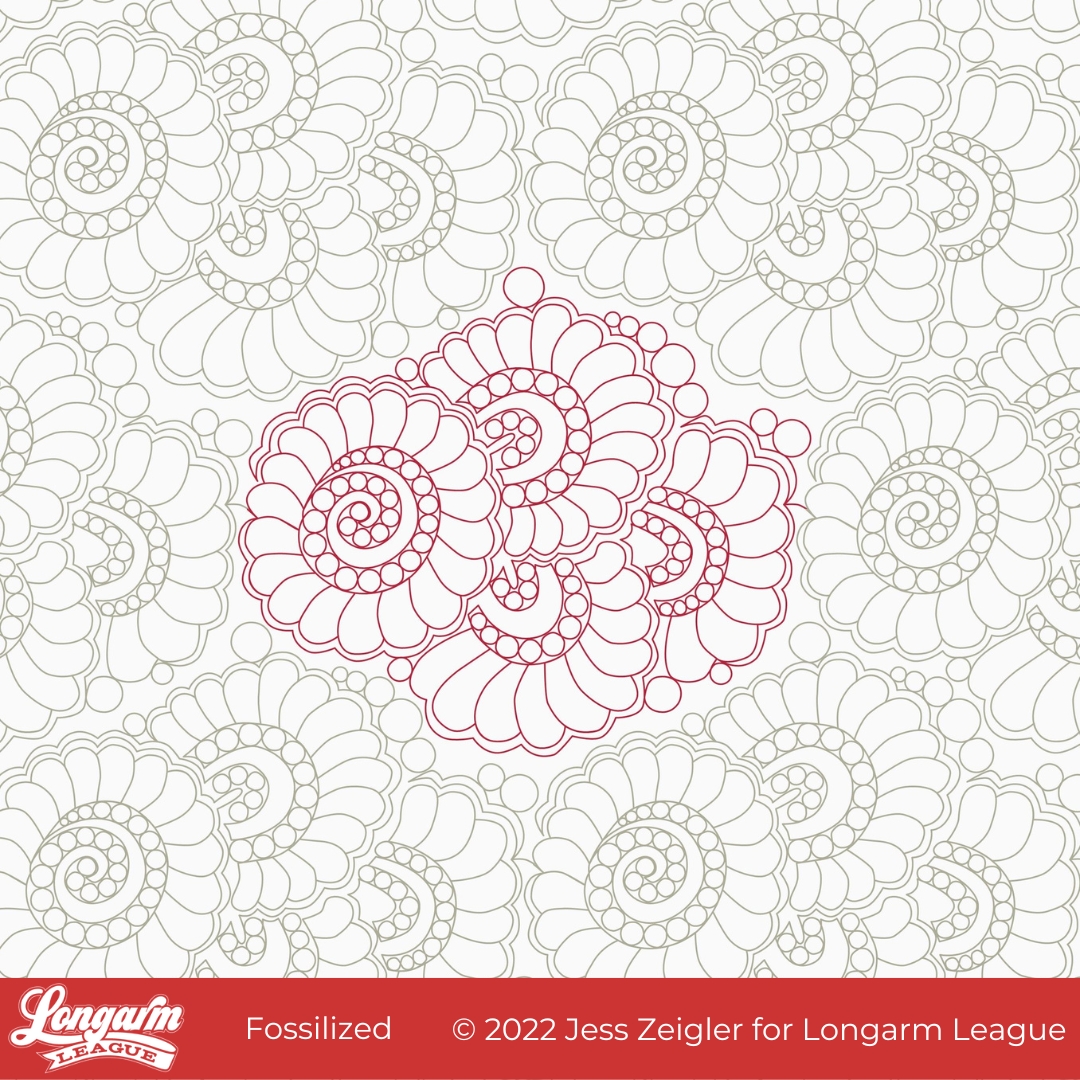
The Background Story
Fossilized is an edge-to-edge design that's been in the works for a long time. In early 2014, I made the small quilt shown below for myself using my own quilt pattern called Star Sighting. It was my first public pattern release under the name Threaded Quilting Studio. Anyway, the quilt used one of my favorite fabric lines ever (Color Me Happy by Vanessa Christianson) and I really wanted to push myself to do something special for the quilting in the negative space.
The quilt above is only 50" x 50" or so, but I remember having to muster the stamina needed to hand-guide all of those dimensional feathered wreaths. :) I thought it took FOREVER, but I was so proud of this quilting motif and thought it worked well in the quilt.
Over the last few years that I've been digitizing designs to be used with a computerized longarm, I've fiddled around with the same motif, struggling with how to make it look dimensional as an edge-to-edge design. The funny thing is that I would have probably just dabbled and put it on the figurative shelf again, but this time I was inspired by a quilt top I'd already pieced and had ready to be quilted.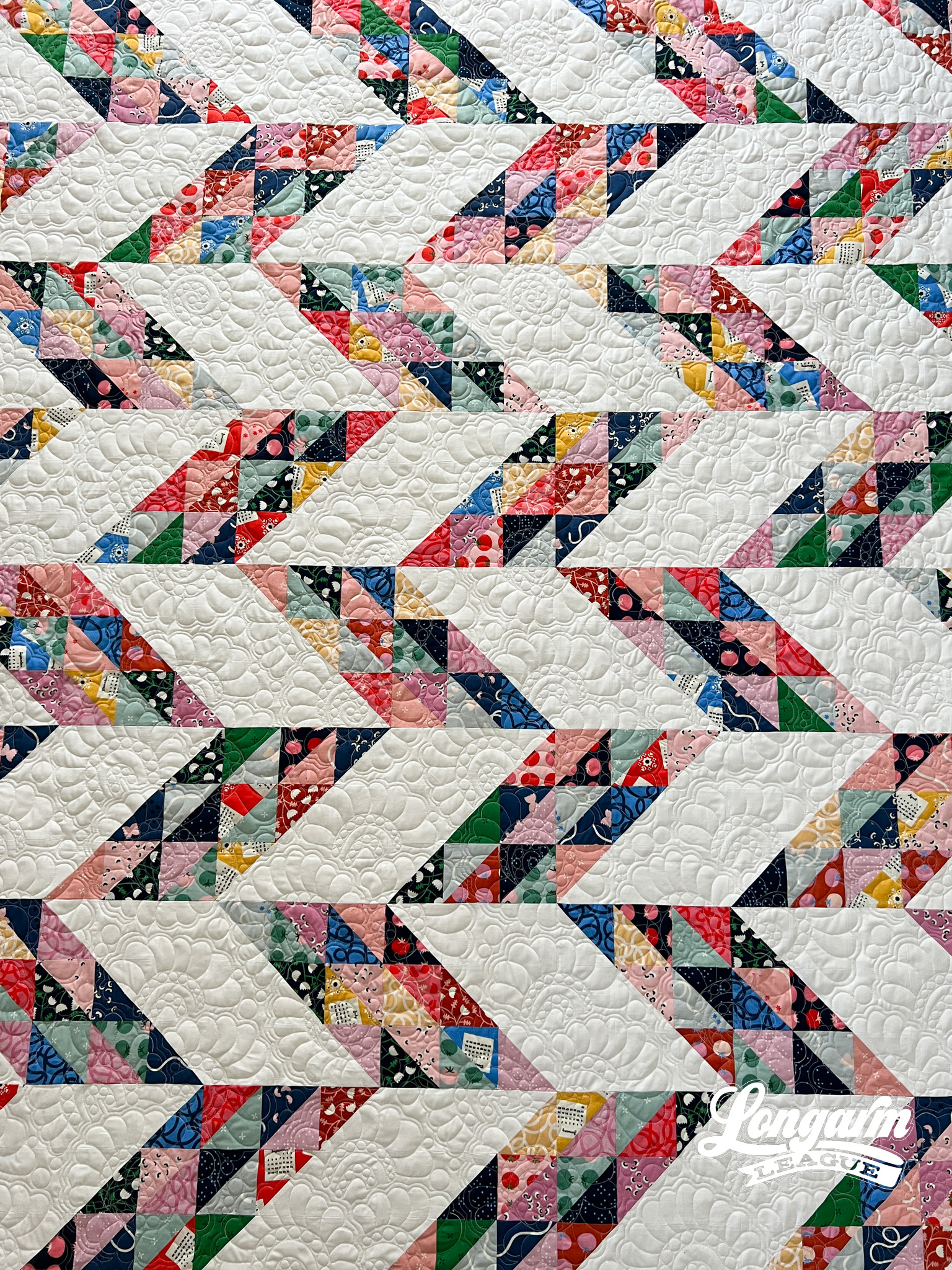
Having an actual quilt top with lots of negative space at the ready helped me power through and stay focused on getting a digital version of the dimensional feather wreaths ready for prime time. For days, I did little else except tweaking, testing the stitch-path via virtual simulation, re-sequencing, micro-adjusting, etc., until I finally put needle to quilt.
As you can see from just looking at it, Fossilized is complex, dense, and will take some time stitching out.
Will this be a "go-to" design for any quilt that comes through your queue? Probably not. Will it be a special design for just the right quilt that comes along? I certainly hope so!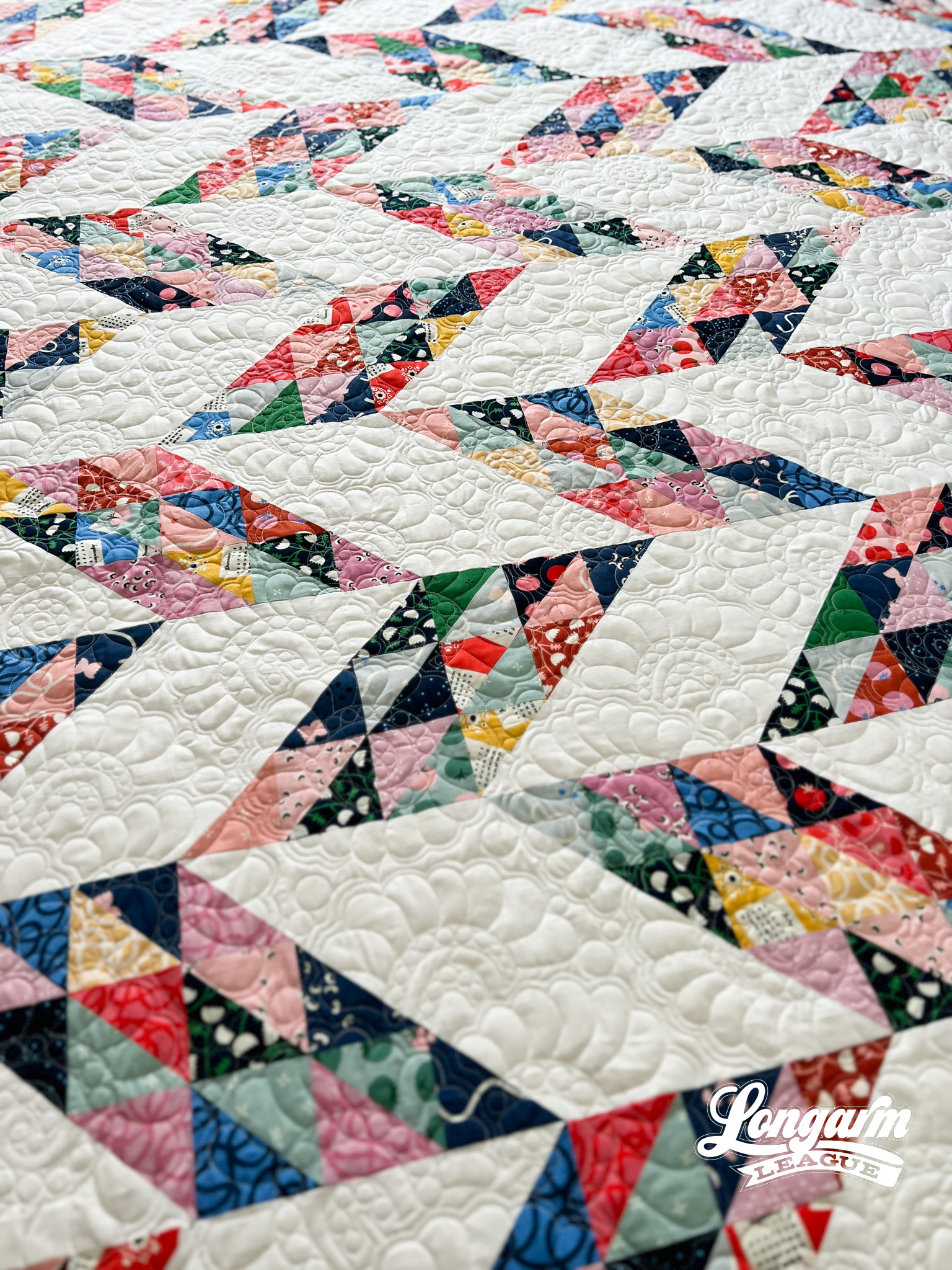
For starters, I wouldn't opt to use this quilting design unless the quilt top you're considering has a decent amount of negative space. With all the time it takes, I would want to make sure you'll be able to see the quilting when it's all said and done.
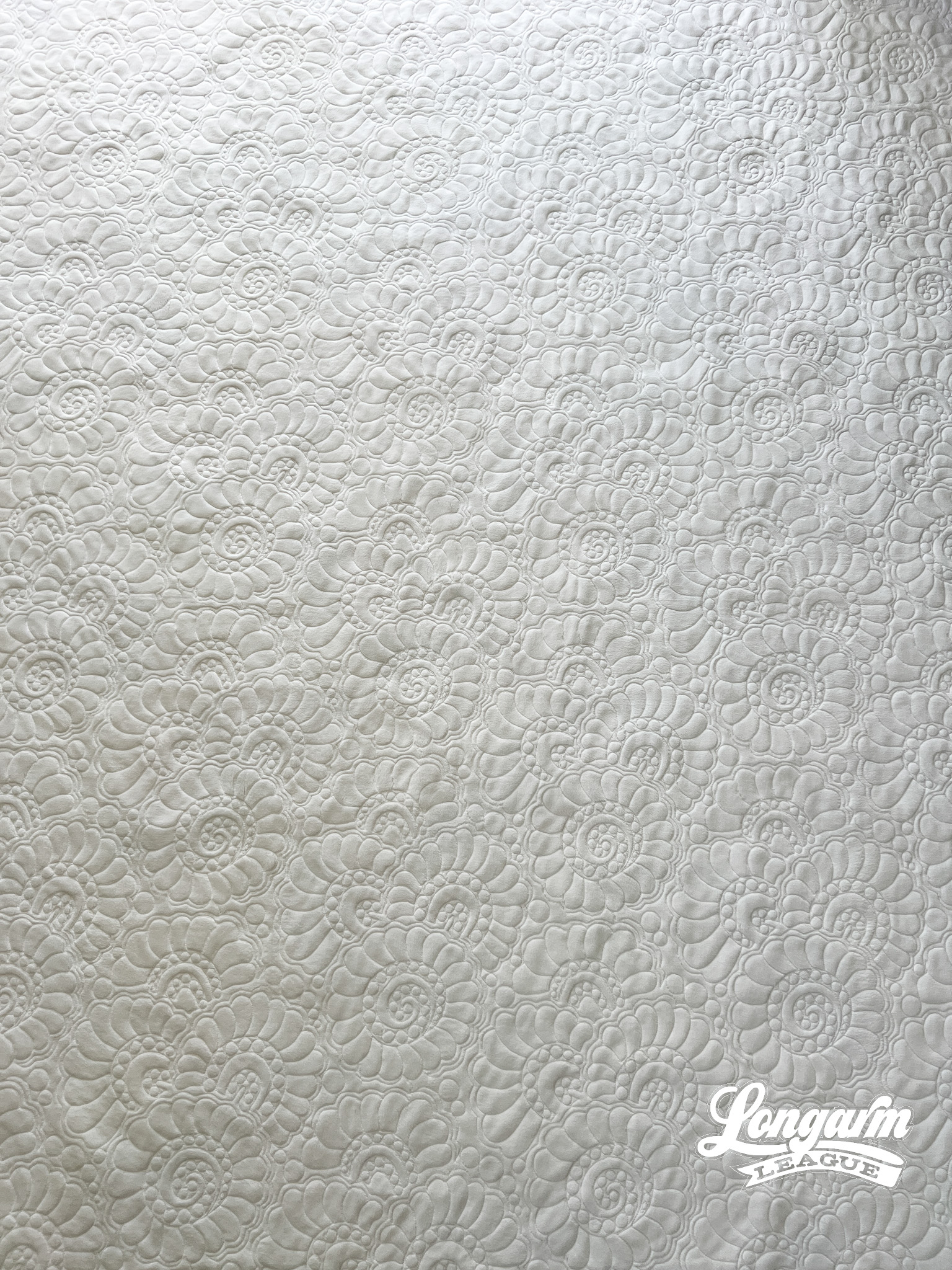
Gotta love solid minky backings for showing off the quilting! I've been using a lot of minky as backings lately. They're so cozy and my kids love the texture!
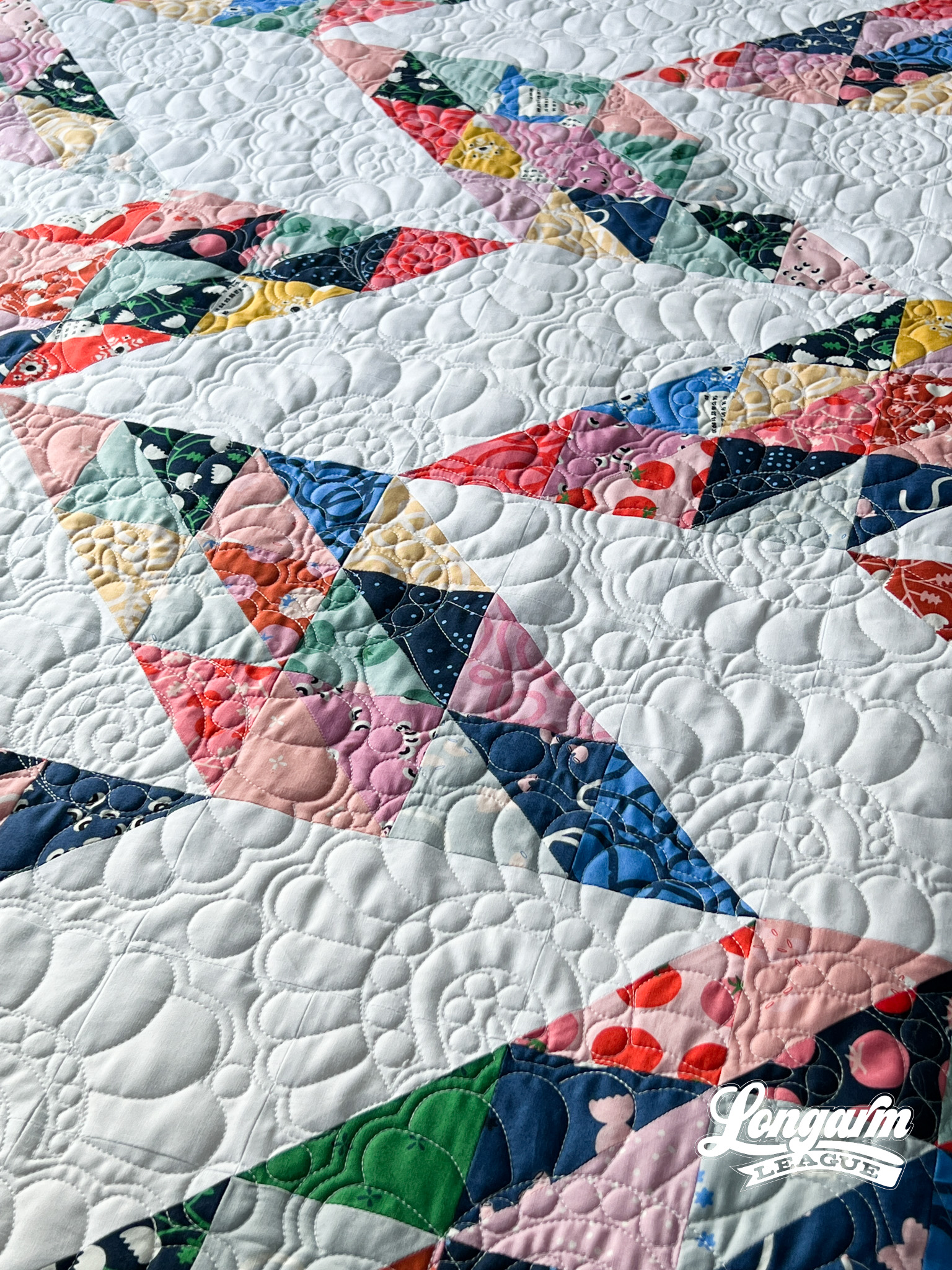
The Featured Quilt
The patchwork quilt that I'm featuring here in this blog post is another one of my designs made for Threaded Quilting Studio. It's called Messenger Bird ($7 USD). If you like using half-square triangles, this would be a great pattern for you. So many options!
I used the Tomato Tomahto line from Kimberly Kight of Ruby Star Society for this quilt. I had so much fabric left over from featuring 4-patch units of this same fabric shown in this quilt, that I knew I wanted to pair what remained of my fat quarter bundle and play that off the crisp white solid fabric for great contrast. I very much enjoyed pairing all those cute prints together!
When it came time to sew the blocks together, I asked one of my sons for help with the layout. Jett chose option 3, which is probably the last one I would have picked, but I'm glad I did because he's got a great sense of style and now this quilt will always remind me of him.

The Technical Details
We already know that this design will take a bit longer to stitch out than typical E2E designs, but there are a few other notes I'd like to go over with you so that you'll have success.
Fabric draw-up is known to happen with dense designs. This is where the quilt shrinks inward as a result of all the quilting stitches. When you're freehand quilting, it doesn't pose that much of a problem because your hands and brain automatically adjusts for the shrinking as you advance the quilt... you might not even notice it's happening. But when you're attempting to place a "fixed" digital design within a minutely smaller area than your last pass, it might look like the new pass is "spreading out" wider, perhaps even overlapping with the previous row's stitching—especially out at the margins if you typically realign in the center.
What can you do? Try milking the quilt after you advance, but before you realign the next row and stitch each pass from left to right. A complete explanation of these techniques can be found in our blog post here.
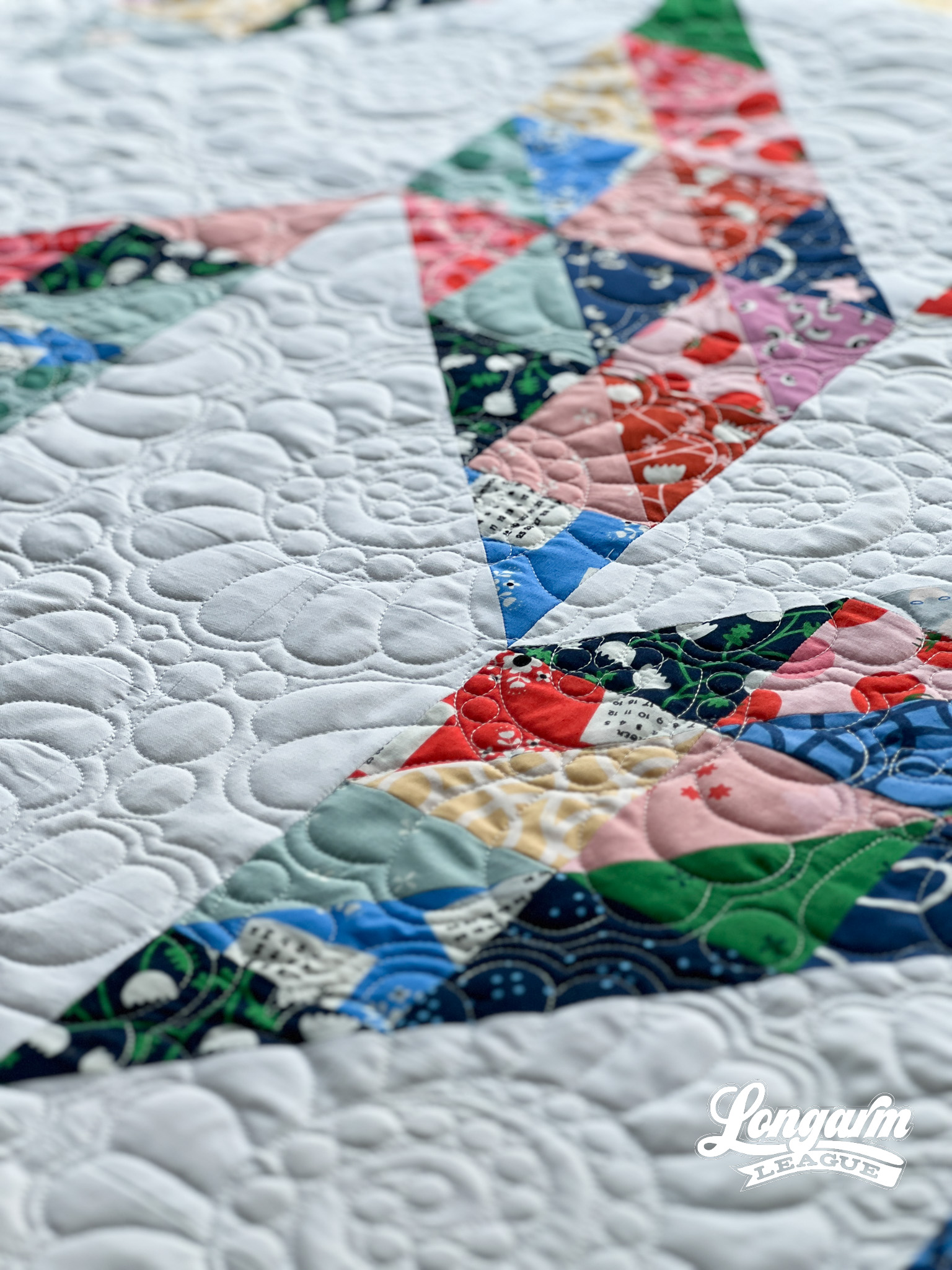
Throughout the stitch-path, there are lots of times where you'll pivot directions, particularly when the feather plumes are stitched. If backtracking looks off, you could slow down your stitching speed to see if it improves. I ran my Intelliquilter at a 1.2 speed with details set to 1.1 and it did pretty well. Having a thicker minky backing that I intentionally kept looser than usual on the frame and also not having a scoop foot may have caused a bit more play or movement during the stitch-out, causing occasional misses for the lines to backtrack perfectly. But the degree to which it was off was very minimal.
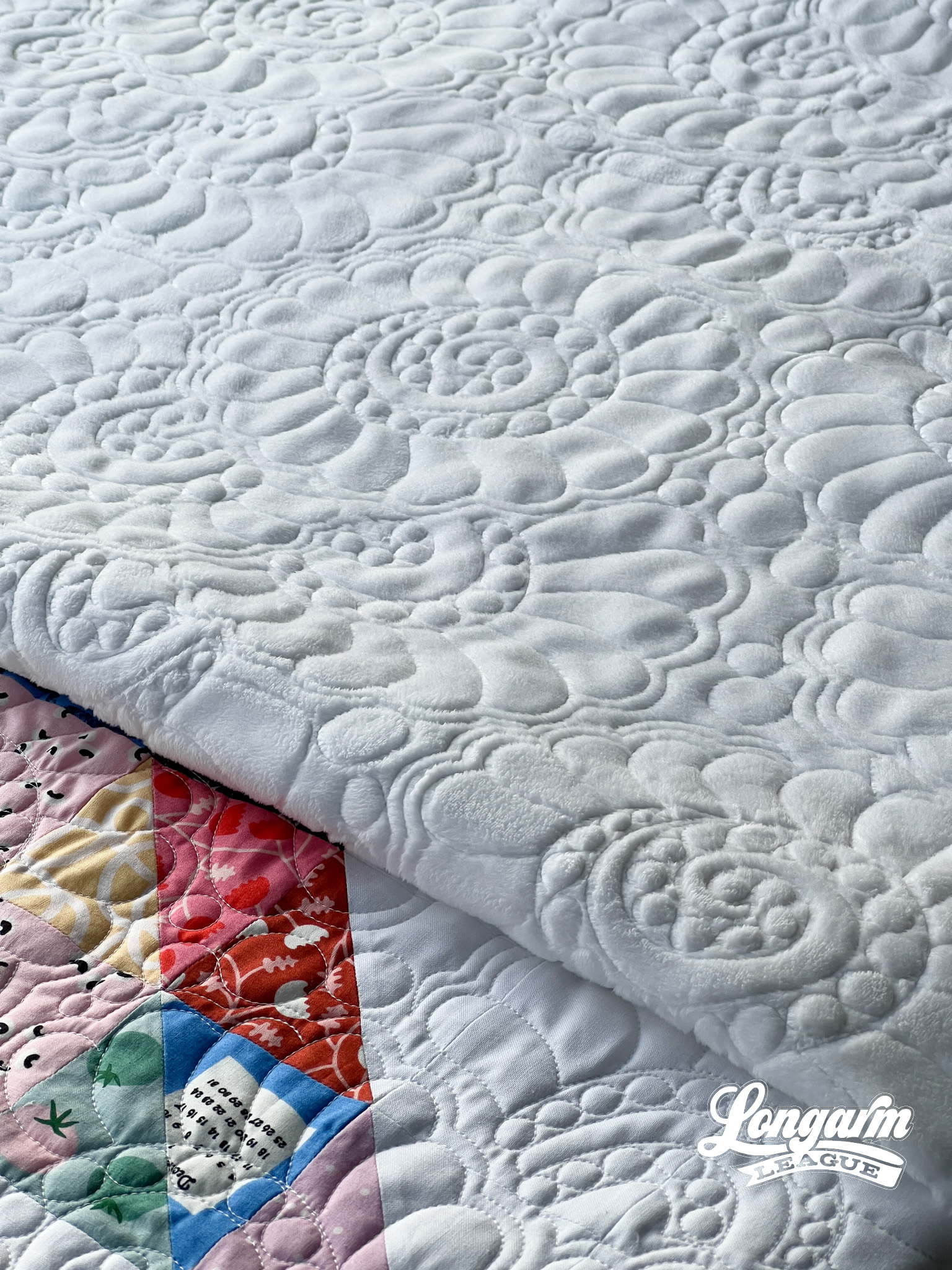
I appreciate that this design can function as "multi-directional". This quilt is 63" x 81". I loaded it sideways and was able to stitch longer passes without having to advance as often. When turned in the traditional orientation for a bed quilt, the quilting looks just as great!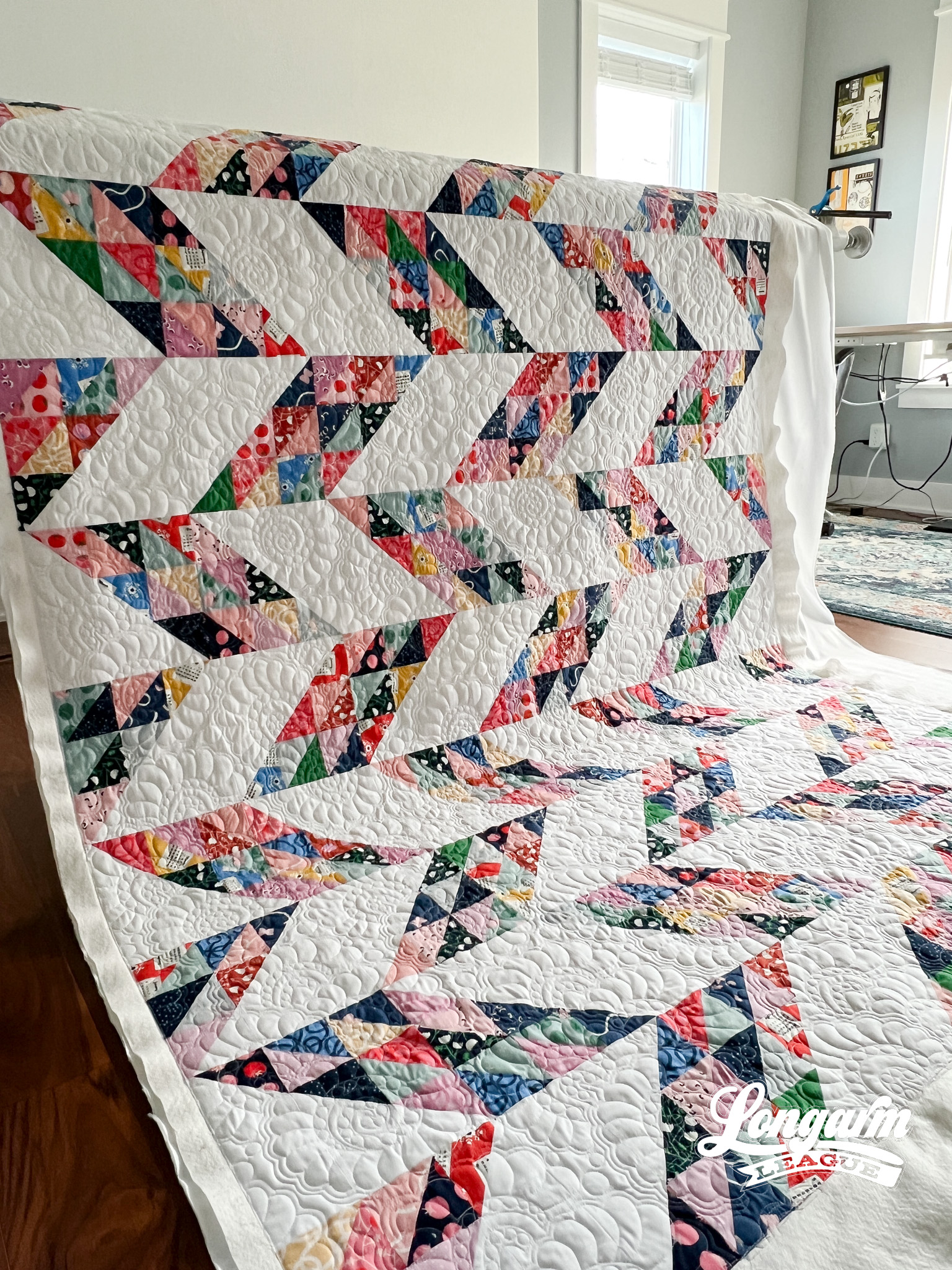
Here are the specifications for how I set up this design using my Intelliquilter (63" x 81" quilt size):
Row height: 10"
Gap: -3.889"
Pattern height: 13.889" (measurement from top to bottom of the repeat)
Offset: 50%
Backtracking: some
I could have sized this down a bit and still had nice results. At the scale shown, the one full feather wreath spans about 7" across by 8" tall, the circles within the center sprial vary but average about .5" in diameter. Throughout the repeat, the feather plumes range from about 1.5"-2.5" tall.
Here's a look at the included PDF:
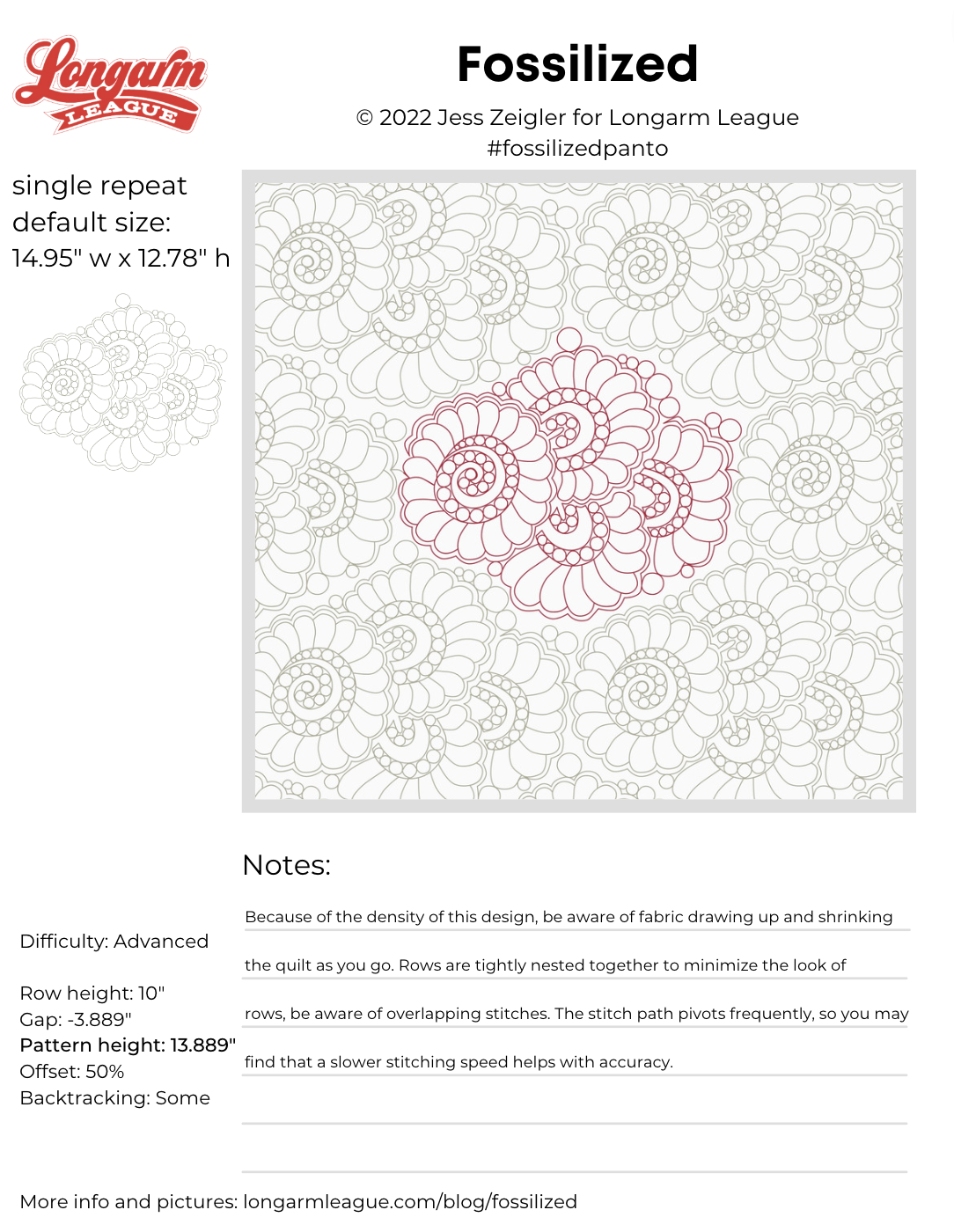
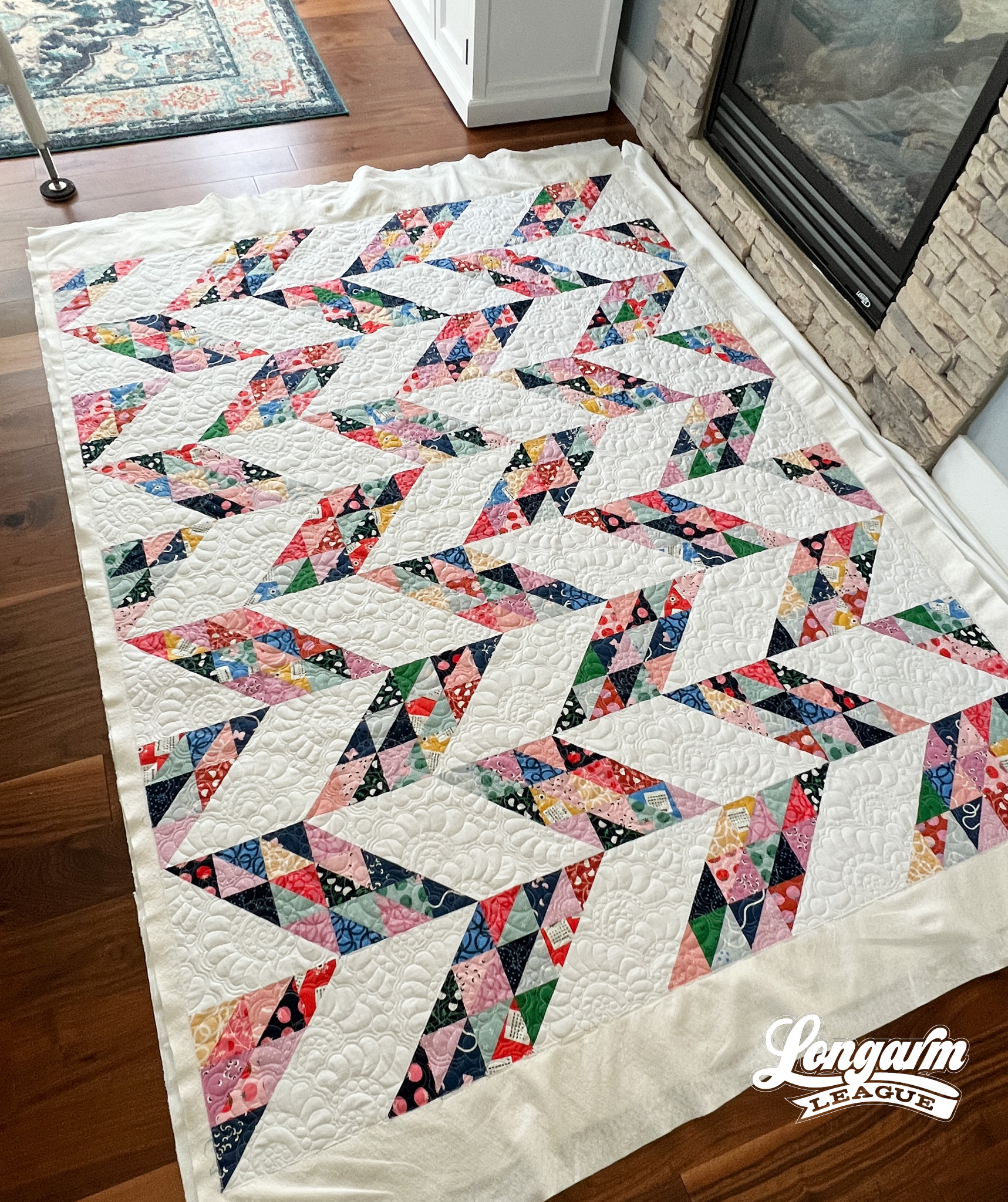
If you use Fossilized on a quilt, we'd love for you to use the hashtag #fossilizedpanto and tag @longarmleague on Instagram so we can see how you use it! You can also visit our full digital design shop to take a look at all our previous designs.
Interested in getting new digital pantograph designs like this one on the day they're released? Sign up for our Digital Panto Club and get them delivered straight to your inbox on the first Wednesday of each new month.
